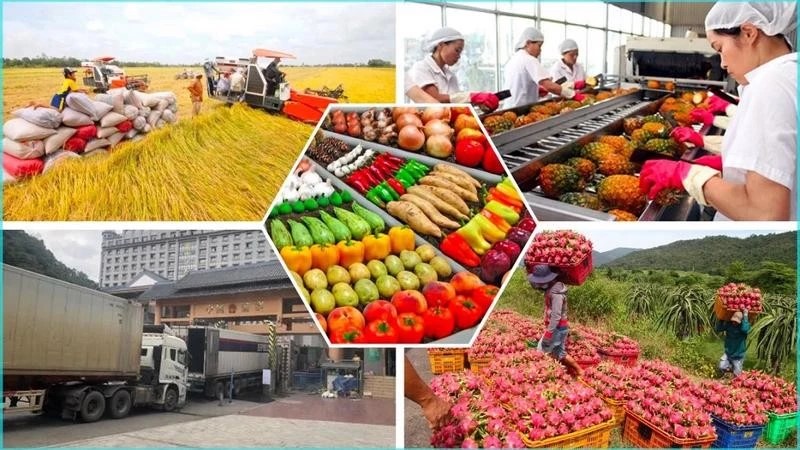
Supply Chain and Preservation of Agricultural Products
Supply Chain and Preservation of Agricultural Products
1. Overview of the agricultural product supply chain
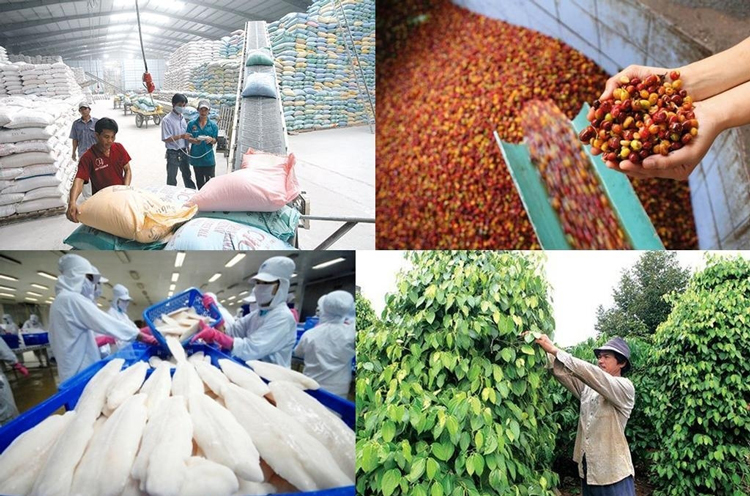
The agricultural supply chain is the process that links various stages from production, harvesting, transportation, processing, preservation to the distribution of agricultural products to consumers. The goal of the supply chain is to ensure that agricultural products maintain their quality, reduce losses, and save costs, while optimizing economic value for farmers, businesses, and consumers.
With the trend of economic integration, the demand for quality and food safety is increasingly high, making the agricultural supply chain play a crucial role in enhancing the value and competitiveness of agricultural products in both domestic and international markets. However, the perishable nature and susceptibility to weather changes of agricultural products require strict, scientific, and synchronized preservation and transportation solutions.
2. The role of the supply chain and preservation of agricultural products
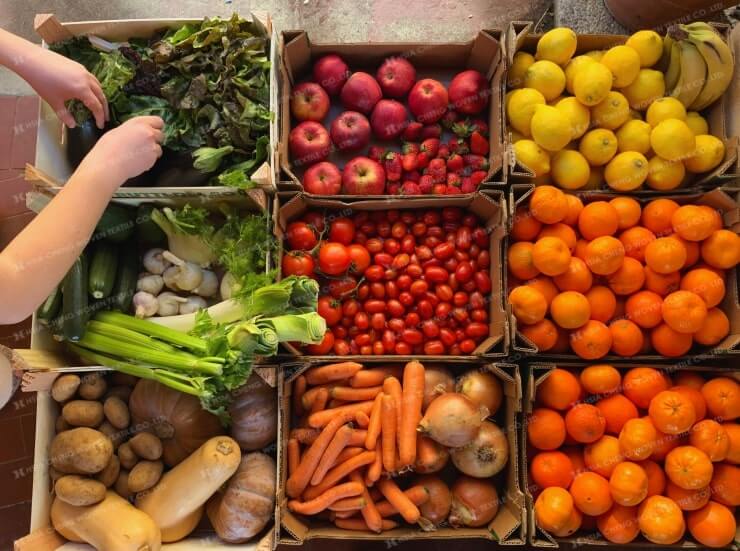
- Maintain quality and food safety
- Without strict preservation and distribution processes, agricultural products are prone to spoilage and microbial contamination, posing safety risks to consumers.
- A closed-loop process, from harvesting to transportation and proper storage, helps reduce losses and ensures the nutritional value of agricultural products.
- Optimize profits and economic value
- A rational supply chain avoids waste, reduces logistics costs, and enhances business efficiency.
- Agricultural products that maintain high quality will increase competitiveness and meet the demands of discerning markets (supermarkets, exports).
- Meet the demands of the modern market
- Consumers increasingly value the quality, safety, and origin of food.
- A modern traceability and preservation system (cold storage, smart packaging, etc.) helps consumers trust the products, thereby expanding the market.
- Contribute to sustainable agricultural development
- Combining safe farming practices, synchronized supply chains, and storage to minimize losses, pollution, and food risks.
- Improving farmers' livelihoods, stabilizing selling prices, and contributing to the sustainable development of the agricultural sector and rural areas.
3. Key stages in the agricultural product supply chain
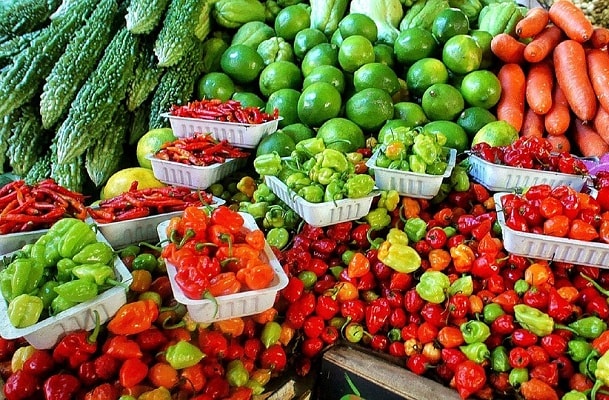
The agricultural supply chain is typically divided into five main stages: production, harvesting, transportation, processing – preservation, and distribution – consumption. Each stage has its own specific technical and management requirements.
3.1. Production (On-farm)
- Selection of varieties and cultivation techniques: Choose suitable varieties, care techniques that minimize pests and diseases, and use safe fertilizers and pesticides.
- Harvesting at the right time: The timing of the harvest greatly affects the quality and storage capacity of agricultural products.
3.2. Harvesting
- Classification and initial processing: Remove damaged or bruised products, wash clean (if necessary) to reduce the risk of bacterial and mold contamination.
- Harvesting methods: Use tools and gentle methods to avoid impacts that could damage the surface of the products.
3.3. Transportation
- Packaging: Depending on the type of agricultural product (vegetables, fruits, meat, fish, etc.), use appropriate packaging (cardboard boxes, mesh bags, shrink wrap bags, etc.) to protect the products from impacts, reduce moisture loss, and keep them fresh longer.
- Choosing transportation means: Refrigerated trucks, refrigerated containers, ventilated storage compartments, or air transport (for high-end agricultural products that require quick delivery).
- Maintaining a stable environment: Ensure temperature, humidity, and hygiene conditions throughout the process.
3.4. Processing & Storage
- Preliminary processing: Trimming, sorting by size, surface sterilization or drying, sometimes pre-processing (cutting, canning).
- Storage: Depending on the nature of the agricultural products, various preservation methods are applied (cooling, freezing, drying, fermentation, using cool storage, adjusting CA/MA atmosphere…).
3.5. Distribution & Consumption
- Distribution channels: Traditional markets (markets, agents), supermarkets, convenience stores, e-commerce channels, exports.
- Quality management: Maintaining temperature, avoiding impacts, checking chemical residues, labeling, traceability… ensuring that products reach consumers safely and meet standards.
4. Common methods of preserving agricultural products
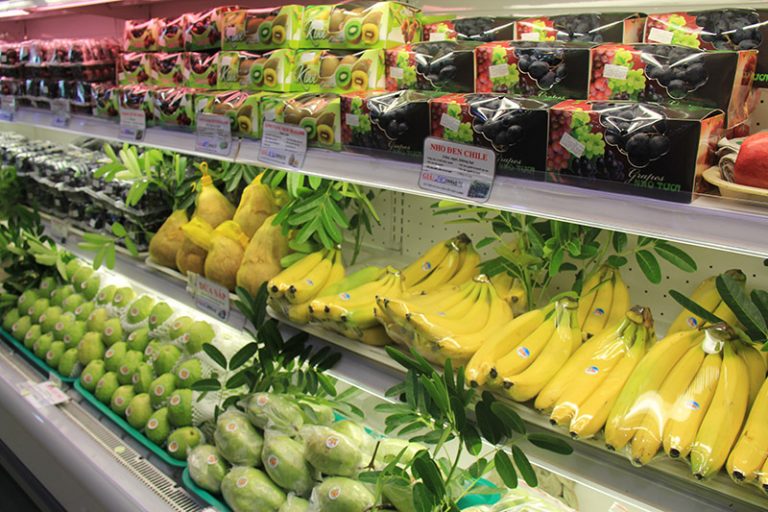
- Cold and frozen storage
- Cold storage, refrigerated containers: Maintain a temperature between 0°C and 15°C (depending on the type of agricultural product) to slow down respiration and ripening.
- Freezing (at -18°C or below): Used for meat, fish, and processed vegetables, preserving nutrients for a long time and limiting bacterial growth.
- Controlled Atmosphere (CA) storage
- Reduce oxygen concentration, increase CO₂, or adjust gas ratios to inhibit ripening and limit microorganisms.
- Suitable for high-value fruits (apples, pears, kiwis, etc.) or long-term storage.
- Drying and smoking
- Drying: Remove water from agricultural products (vegetables, fruits, dried meat, dried fish), extending shelf life.
- Smoking: Mainly applied to fish and meat, adding flavor and prolonging preservation.
- Canning, pickling, and sugar soaking
- Suitable for fruits, vegetables, and meat, ensuring sterilization during packaging, extending shelf life (6–12 months or more).
- Adds commercial value and diversifies products in the market.
- Preservation with safe chemicals (limited)
- Use permitted preservatives, such as biodegradable films, ethylene-absorbing bags, etc., to reduce ripening and mold.
- It is necessary to comply with food safety regulations to avoid chemical residues that may affect health.
5. Challenges in the supply chain and preservation of agricultural products
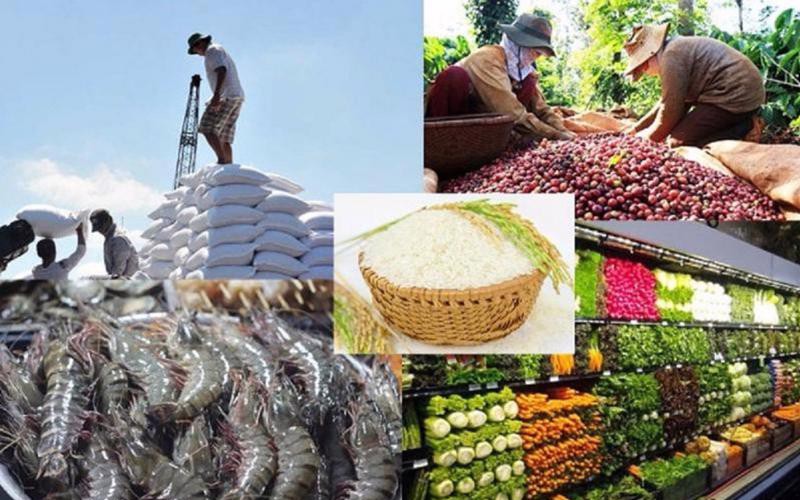
- Logistics and technology infrastructure
- Many rural areas lack cold storage, refrigerated vehicles, poor roads, and prolonged transportation, leading to agricultural product losses.
- Preservation technology (cool storage, CA/MA, etc.) is not widespread, and investment costs are high.
- Small-scale, fragmented production
- Many farmers lack harvesting and preservation techniques.
- Khó kết nối chuỗi do thiếu hợp tác xã hoặc liên kết doanh nghiệp, dẫn đến chi phí logistics tăng, khó kiểm soát chất lượng.
- Awareness and management skills
- There is a shortage of specialized personnel in warehouse management, quality control, and cold chain operation.
- Farmers and small traders tend to use preservation chemicals improperly, affecting food safety.
- Climate change and weather risks
- Agricultural products are vulnerable to damage from high temperatures, floods, and natural disasters, making it difficult to plan for storage and transportation.
- Instability in production and supply-demand markets.
- High costs, difficult to compete
- Operating cold storage, refrigerated containers, and cold chains consumes a lot of energy.
- Product prices may be high, and the domestic market is price-sensitive, making it challenging for businesses to invest in the long term.
6. Solutions to enhance the efficiency of the supply chain and preservation of agricultural products
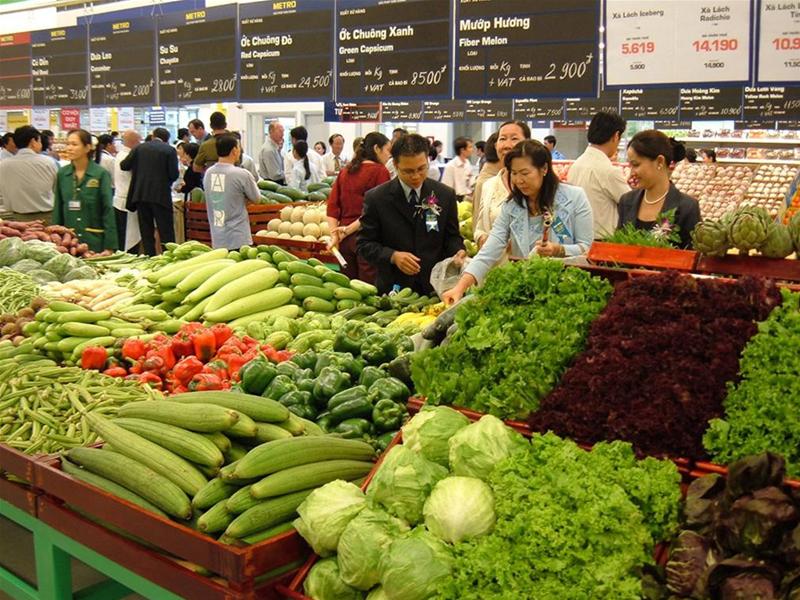
- Investment in infrastructure and technology
- Build agricultural logistics centers in key areas, equipped with cold storage, drying rooms, and cool warehouses.
- Encourage businesses to participate in the cold chain, applying IoT technology to monitor temperature, humidity, and traceability.
- Strengthening supply chain links
- Promote cooperative models, linking farmers, businesses, and supermarkets to ensure supply according to contracts and reduce market risks.
- Distribute profits fairly among the links, creating incentives for investment in improving production and preservation quality.
- Training human resources and raising awareness
- Organize training courses for farmers, agricultural extension officers, and cooperatives on harvesting techniques, preservation, and quality control.
- Communicate to consumers about the value of properly preserved agricultural products, encouraging them to pay for safe, quality products.
- Government support policies
- Exempt/reduce taxes, provide credit incentives for cold storage projects and processing lines.
- Create a legal framework and national standards for food safety and the cold chain.
- Digital transformation applications
- Utilize e-commerce platforms, order management, and shipping to shorten intermediaries and reduce storage time.
- Apply sensors and warehouse management software (WMS) to monitor storage conditions and forecast market demand.
- Research and development of value-added products
- Encourage deep processing: Canning, drying, refined freezing, etc., to increase value and extend shelf life.
- Create regional brand products and geographical indications associated with special preservation processes to enhance the reputation of agricultural products.
7. Conclusion
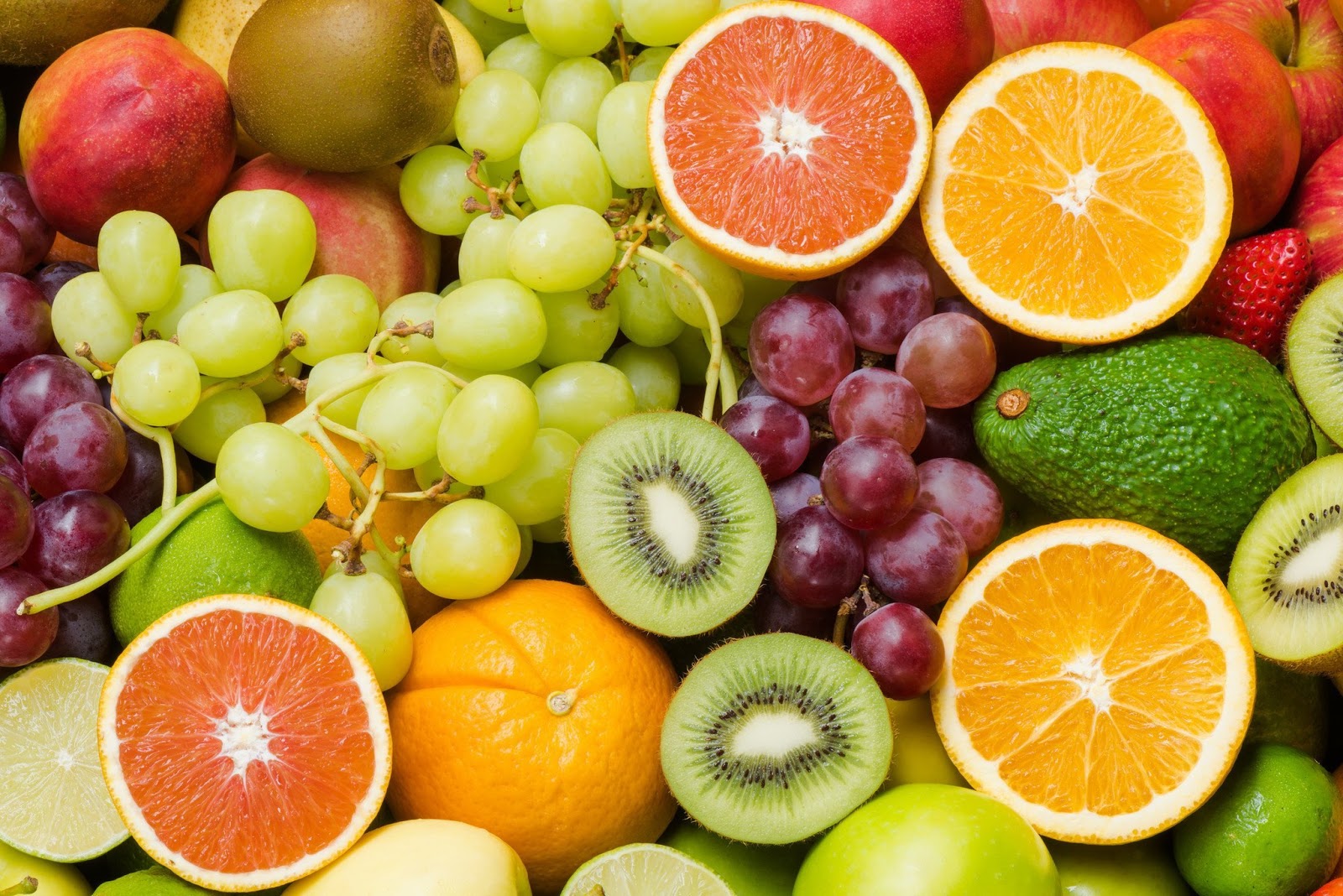
The supply chain and preservation of agricultural products play a crucial role in maintaining quality, nutritional value, and food safety for consumers. To enhance effectiveness, it is necessary to build a modern logistics system, apply advanced preservation technologies, establish close links among parties in the chain, and receive support from government policies.
In the context of climate change, increasing quality demands, and global trade trends, investing in the agricultural supply chain will help the agricultural sector maintain its competitive edge, protect the interests of farmers, consumers, and businesses. This is also an important step towards ensuring food security, improving rural livelihoods, and achieving sustainable development for the future.
Bình luận
Những bình luận mới nhất



